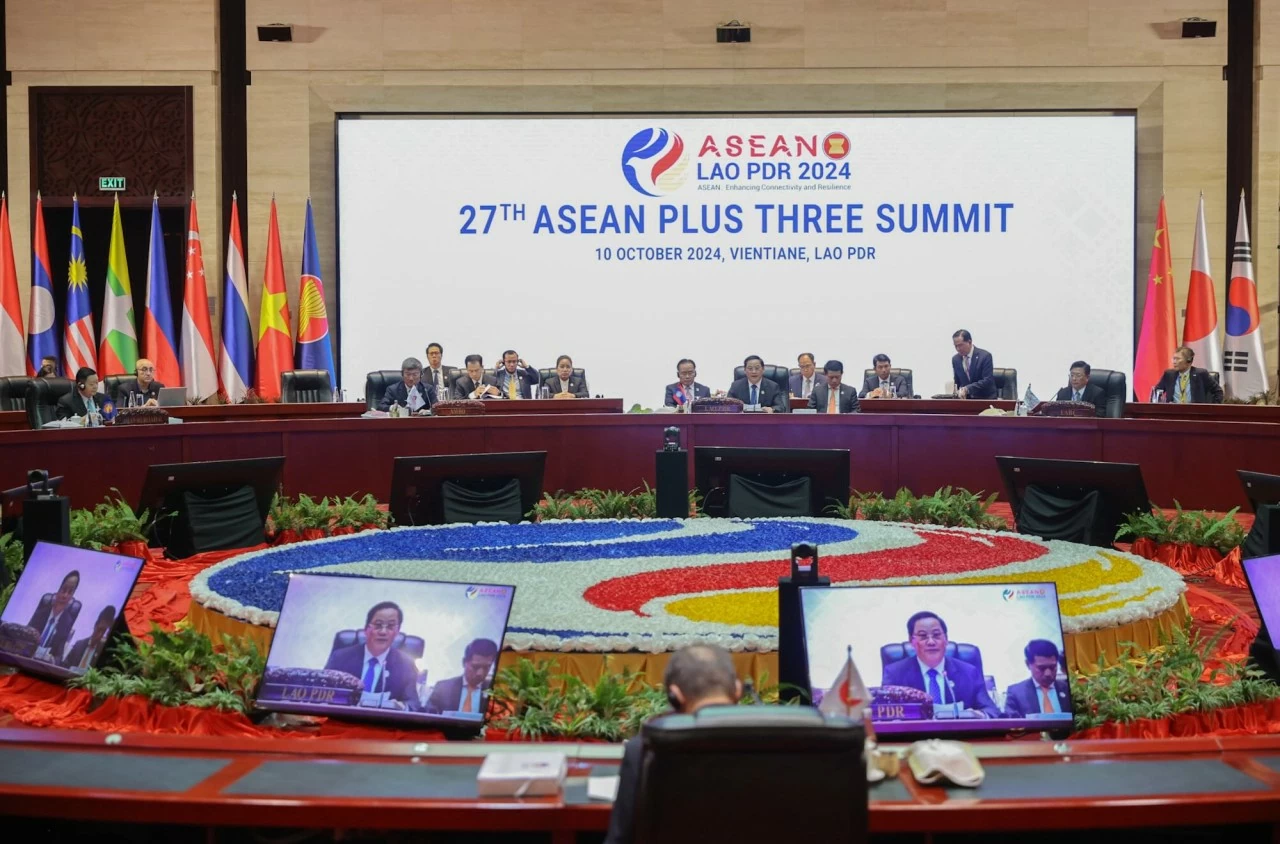 |
| At the ASEAN+3 Summit, the leaders of ASEAN and the three countries of China, Japan and South Korea all emphasized the importance of the ASEAN+3 cooperation framework, highly appreciating the positive progress in ASEAN+3 cooperation in recent times. (Source: Nhat Bac) |
The world is in a period of insecurity and uncertainty with many unpredictable events. Strategic competition between major powers, especially the US and China, is becoming increasingly fierce, spreading from trade to technology, security and other areas.
Meanwhile, global governance mechanisms such as the United Nations and the World Trade Organization are facing a crisis of effectiveness and legitimacy. Pressure is mounting on countries to “pick sides,” while a pragmatic, short-termist mentality that leads to insecurity and mutual suspicion is becoming more prevalent.
In the current international political context, when superpowers are showing their dominant role and power politics becomes the dominant behavioral trend, it seems that all attention is focused on big countries and middle-level actors are receiving less attention.
However, there is another reality: as the international landscape becomes increasingly fragmented and uncertain, middle-level actors with a tradition of neutrality, peace-loving, and the ability to connect and reconcile like ASEAN will gain more prestige and value. ASEAN is emerging as a credible actor in an increasingly uncertain and suspicious world - where consensus and cooperation are scarce.
This view was widely echoed by many leading politicians and scholars in the world at the ASEAN Future Forum 2025 (AFF 2025) held in Hanoi on February 25-26. The forum demonstrated the value of middle-level actors like ASEAN in the regional and global security architecture, especially when the world is looking for balanced and constructive voices amid growing conflicts.
ASEAN - A moderate middle power with 5 unique values
In her video message to the ASEAN Future Forum 2025, UN Deputy Secretary-General Amina Mohammed emphasized: "ASEAN stands as a beacon of cooperation and a bridge between regions, demonstrating the power of unity, consensus and action." This message not only affirms ASEAN's special role in the context of many global governance mechanisms facing crisis, but also represents international recognition of the bloc's unique value.
In an increasingly fragmented and confrontational world, ASEAN maintains the unique position of a “moderate middle power”, not too big, not too small: economically large enough to attract attention, but not constituting a military bloc that could threaten the security of any major power. ASEAN’s unique soft power in the regional and international architecture is shaped by the following five key elements.
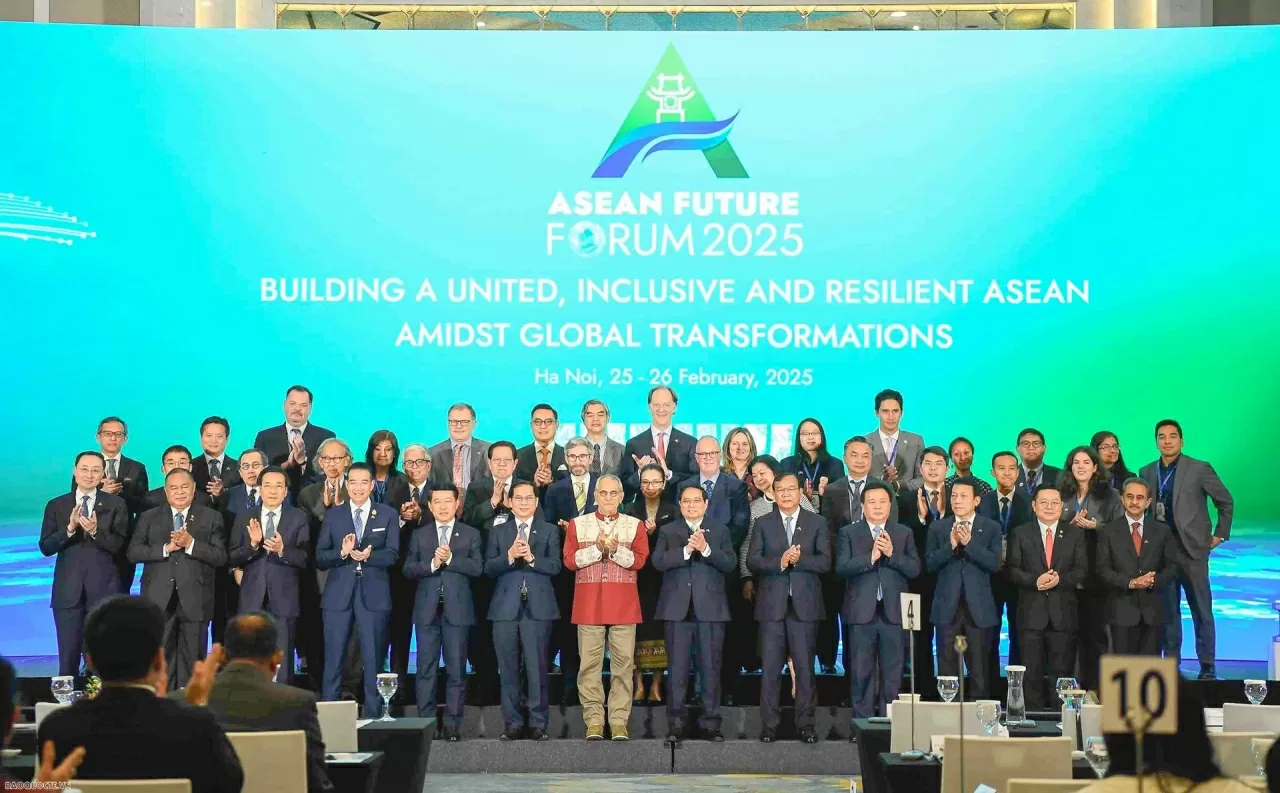 |
| ASEAN Future Forum 2025: Telling numbers and a like-minded reunion. (Photo: Nguyen Hong) |
Important natural geopolitical and geostrategic position
ASEAN occupies a particularly important geographical position, located at the heart of the Indo-Pacific region, connecting major economic centers of the world. With its territory stretching from Myanmar in the West to the Philippines in the East, from Vietnam in the North to Indonesia in the South, ASEAN controls a large and diverse geographical space, including both mainland and islands.
This geographical location has made ASEAN a traffic junction connecting East Asia with South Asia, the Pacific with the Indian Ocean. This region controls vital global sea lanes, of which the Strait of Malacca is a strategic shipping route connecting the Indian and Pacific Oceans, through which a quarter of the world's maritime trade passes every year.
According to maritime experts, about 60% of global shipping and more than 80% of oil supplies to Northeast Asia pass through these sea routes, making ASEAN's position irreplaceable in the global supply chain.
At the same time, the East Sea with important shipping routes and rich resources is also an area in which ASEAN countries have direct interests.
The South China Sea is not only home to large reserves of oil, gas and seafood, but also has high ecological and biodiversity values, playing an important role in regulating the regional climate. This makes ASEAN's voice on the South China Sea issue always receive attention, especially when ASEAN is trying to promote the negotiation process of the Code of Conduct in the South China Sea (COC) with China.
The region is a crossroads of many cultures and religions, from Buddhism, Islam, Christianity to Hinduism, creating a diverse and culturally rich environment. This diversity, coupled with its unique geographical location, has helped ASEAN develop its ability to communicate and connect with different cultures and political systems, thereby strengthening its role as a bridge in international relations.
This makes ASEAN impossible to ignore in any geostrategic calculations of the major powers, especially in the context of increasingly fierce US-China competition in the Indo-Pacific region.
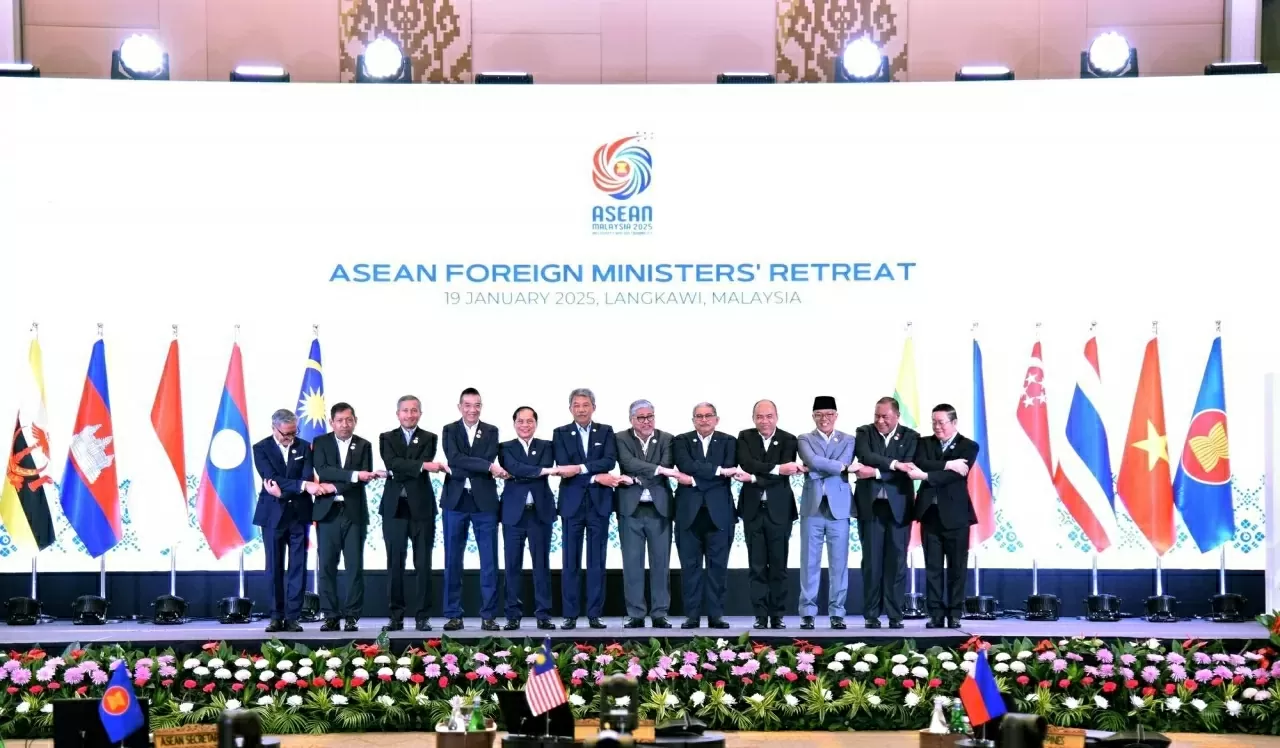 |
| The ASEAN Foreign Ministers' Retreat took place on January 19 in Malaysia, officially launching the ASEAN Year 2025. The ASEAN Community Vision 2045 will also be adopted within the framework of ASEAN 2025 under Malaysia's chairmanship. (Source: VGP) |
Sufficient economic scale with positive prospects
ASEAN, with a population of over 650 million and a combined GDP exceeding US$3 trillion, is one of the world's most dynamic economic regions and is on track to become the world's fourth largest economy by 2040.
Some members have become key nodes in global value chains. Initiatives such as the ASEAN Digital Economy Framework Agreement (DEFA) and free trade agreements such as the Regional Comprehensive Economic Partnership (RCEP) have enhanced their ability to attract investment and expand economic cooperation with external partners.
This economic strength gives ASEAN a significant voice in global economic forums. At the ASEAN Future Forum 2025, the New Zealand Prime Minister emphasized: "Today, Southeast Asia is one of the most exciting, dynamic and productive regions in the world. Your countries are growing at double, in some cases triple, the rate of developed countries."
In addition, ASEAN has demonstrated its resilience and collective strength by effectively responding to economic crises and pandemics. Following the 1997 Asian financial crisis, ASEAN has strengthened regional economic cooperation through initiatives such as the ASEAN Trade in Goods Agreement (ATIGA), the ASEAN Investment Framework (AIA), and especially regional financial mechanisms such as the Chiang Mai Initiative and the Asian Foreign Exchange Reserve Fund.
During the Covid-19 pandemic, ASEAN has been quick to set up a Covid-19 Response Fund, promote information sharing and health cooperation, and develop comprehensive economic recovery plans. Singapore's Foreign Minister at the ASEAN Future Forum emphasized: "We have moved towards deepening regional economic integration and creating more opportunities for our businesses and people across the region. We have upgraded the ASEAN Trade in Goods Agreement as well as the ASEAN Digital Economy Framework. We have also upgraded our free trade agreements with Australia and New Zealand, with China, and soon with Korea."
These efforts demonstrate ASEAN’s ability to unite to address common challenges while maintaining economic momentum even in difficult times, affirming ASEAN’s value as a regional organization that is able to adapt and overcome challenges. This has drawn the attention of partners to the opportunities and long-term prospects of cooperation with ASEAN.
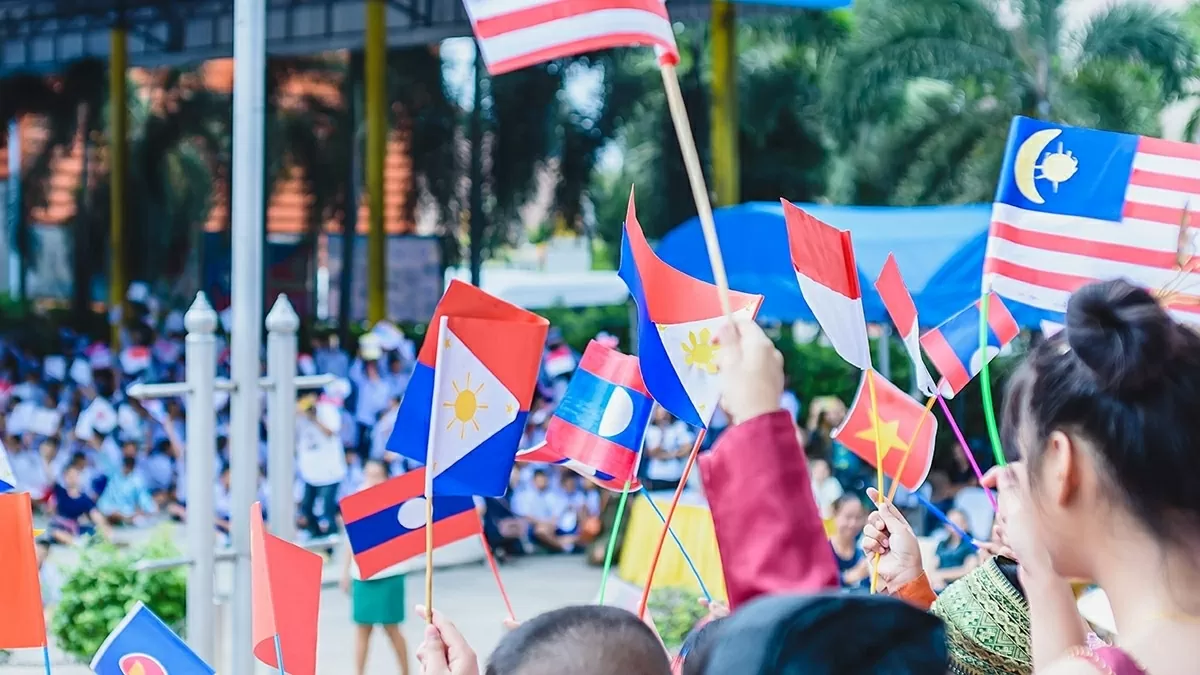 |
| The establishment of the ASCC has opened a new chapter in the process of developing the ASEAN Community in a people-centered and people-led direction. (Source: Asia Society) |
The affiliate model is at a moderate level, not causing insecurity for partners.
Different from the European Union (EU) with its highly integrated model or the North Atlantic Treaty Organization (NATO) with its clear commitment to collective security, ASEAN has chosen a soft-linked approach, respecting the national sovereignty of its members, under the slogan "unity in diversity".
This model does not create a regional superstate that could threaten any major power, while still allowing ASEAN to maintain comprehensive strategic partnerships with both China and the United States without being tied to one-sided security commitments.
This unique approach makes a stark difference when comparing ASEAN to other regional groupings. While the Quad (the US, Japan, Australia, India) is explicitly aimed at countering China’s growing influence and the Shanghai Cooperation Organization (SCO) largely excludes Western powers, ASEAN-led forums such as the East Asia Summit (EAS) and the ASEAN Regional Forum (ARF) succeed in bringing competitors to the same table – an increasingly rare occurrence in today’s polarized geopolitical environment.
The New Zealand Prime Minister acknowledged: “The ASEAN regional architecture has become incredibly important to the stability of the wider Indo-Pacific region. Centrality has to be reinvented and reinvented and reinvented again and again. But it is the ability to convene regional dialogue through ASEAN that is so important and so essential, and that is why we support the ASEAN vision for the Indo-Pacific.”
Singaporean Ambassador Bilahari, despite frankly pointing out ASEAN's limitations, still had to admit at the ASEAN Future Forum: "I think we can confidently say that ASEAN still plays a central role with its main function being to manage relations between members, to manage relations [between outside] and the Southeast Asian region."
ASEAN's distinctive values as the foundation of cohesion
ASEAN was formed and maintained on the basis of common values of consensus, neutrality, support for peace and friendship. The principle of non-interference in each other's internal affairs and respect for national sovereignty has created a stable environment for regional cooperation, especially in the context of member countries having great differences in politics, culture and development level.
ASEAN's identity has been created by common values cultivated throughout history, and by the aspiration for peace that has overcome division and suspicion. The image of ASEAN today is associated with the spirit of peace, friendship, and solidarity in diversity.
Professor Amitav Acharya, a leading expert on ASEAN, commented at the ASEAN Future Forum: "ASEAN is a hub of adaptation and innovation, and no country represents it better than Vietnam. When I started studying ASEAN in the 1980s, no one could have imagined that one day Vietnam would be the convergence point, hosting the ASEAN Future Forum in Hanoi?" This comment reflects the remarkable transformation not only of Vietnam but also of the entire ASEAN from a region of confrontation and division to a community of solidarity and unity in diversity.
It is the shared values that its members have cultivated that have made ASEAN a peaceful and trustworthy partner in the eyes of all partners. In her video message to the ASEAN Future Forum, President of the European Commission (EC) Ursula von der Leyen also shared: "We may be in two different corners of the planet, but Europe and Southeast Asia have a lot in common... We both believe in open and fair trade and the power of partnership to bring peace and prosperity. Despite our geographical distance, our cooperation is closer today than ever."
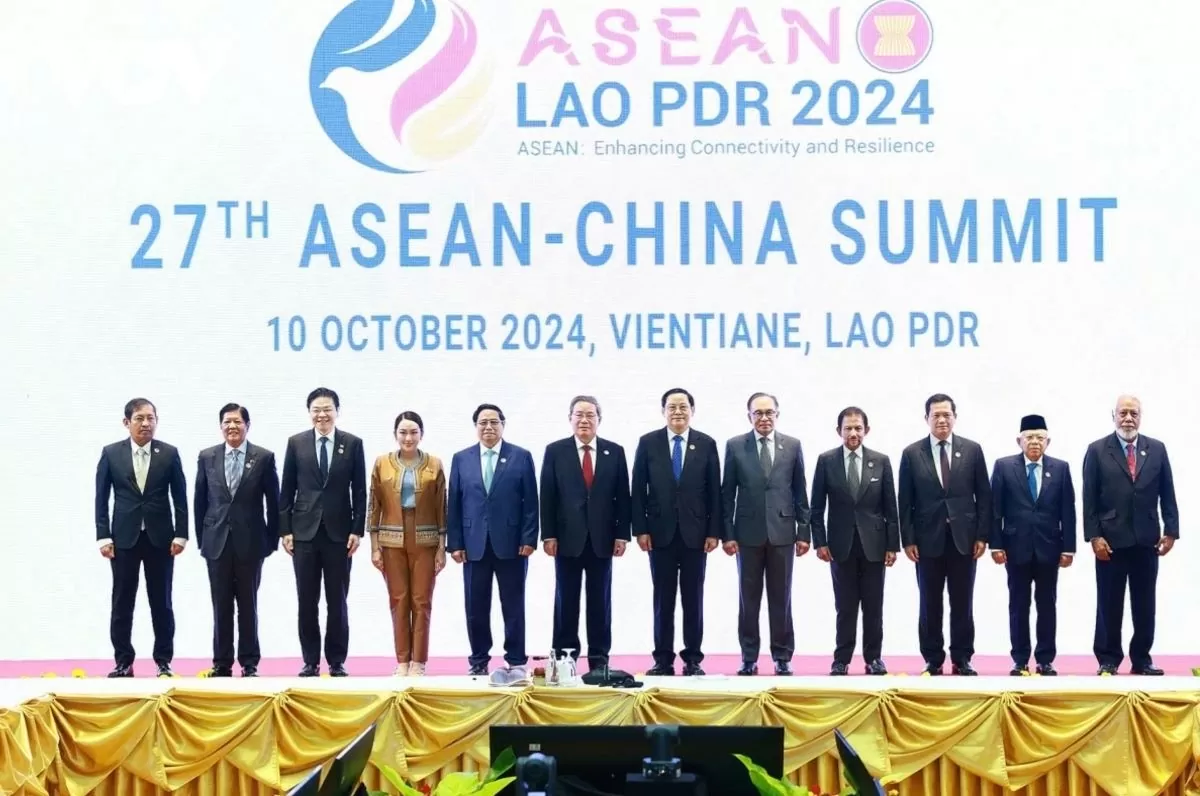 |
| Leaders attending the 27th ASEAN-China Summit pose for a group photo. (Source: VNA) |
Structural network with ASEAN at the center
One of ASEAN’s greatest achievements is the establishment of a network of regional dialogue and cooperation mechanisms with ASEAN playing a central role. ASEAN has already established “co-working spaces” to invite countries to come together to discuss and resolve disagreements.
Forums such as the ARF, EAS, ASEAN+3, and the ASEAN Defense Ministers Meeting Plus (ADMM+), and the Treaty of Amity and Cooperation (TAC) are all initiated and led by ASEAN, creating a multi-layered, multi-sectoral regional architecture. This architecture helps ASEAN maintain its central position in regional affairs, ensuring that the voices of smaller countries are not overwhelmed by the major powers.
When tensions escalated between Japan and China over the East China Sea dispute in 2012-2013, ASEAN mechanisms, such as the Expanded ASEAN Maritime Forum (EAMF) established in November 2012, provided essential space for exchanges between parties when bilateral channels had virtually frozen.
Similarly, in the South China Sea issues, although ASEAN cannot directly resolve territorial disputes, the dialogue mechanisms led by this organization have helped maintain peace, prevent conflict escalation, and create a favorable environment for parties to seek solutions through negotiations. The negotiation process of the Code of Conduct in the South China Sea (COC) between ASEAN and China, despite many challenges, is still a remarkable effort to establish rules of conduct at sea, contributing to maintaining regional stability.
The ASEAN Outlook on the Indo-Pacific (AOIP) is a good example of how ASEAN shapes the regional discussion. Unlike the one-sided and competitive “Indo-Pacific” strategies of other countries, the ASEAN Outlook emphasizes comprehensive and inclusive cooperation in the economic, socio-cultural, and political-security areas.
This approach has been adopted by dialogue partners including Australia, Japan, South Korea and even China to some extent, demonstrating ASEAN’s ability to shape a common vision for the region despite not being a player like the world’s top powers. In his message to the ASEAN Future Forum, the UK Foreign Secretary also affirmed: “The UK supports the ASEAN Outlook on the Indo-Pacific.”
AOIP also demonstrates a “middlepower” mindset in shaping the external environment rather than being shaped by it. This is a form of constructive diplomacy that underscores ASEAN’s unique value in an era of uncertainty and suspicion.
Fully aware of this, the Singaporean Foreign Minister emphasized: "We must continue to maintain an open, inclusive and rules-based regional architecture through the ASEAN Outlook on the Indo-Pacific. This framework promotes cooperation and collaboration in the Indo-Pacific, especially with the growing participation of all major powers."
ASEAN overcomes challenges, looks towards the future
Despite its remarkable achievements, ASEAN still faces enormous challenges in an increasingly complex and unpredictable world. To maintain and strengthen its role as a moderate middle power, the regional organization must overcome its internal limitations and adapt flexibly to an ever-changing international environment.
Inherent limitations in organizational structure and operating mechanisms are posing significant challenges for ASEAN.
While ASEAN has always placed great importance on consensus-based decision-making, this has often made the organization slow to respond to urgent situations, as evidenced by the time it took ASEAN to reach consensus on its approach to the Myanmar issue.
Similarly, the principle of non-interference in internal affairs - one of the pillars of the "ASEAN identity" - also sometimes limits the ability to thoroughly resolve regional crises. These challenges require ASEAN to consider more flexible and creative ways of making decisions.
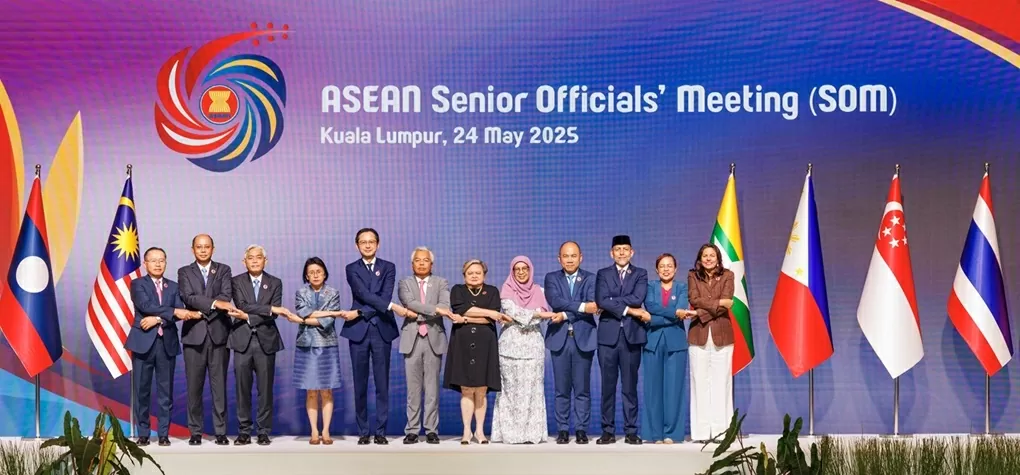 |
| Despite many remarkable achievements, ASEAN still faces enormous challenges in an increasingly complex and unpredictable world. (Source: VNA) |
It can be seen that ASEAN has inherent appeal from its geographical position, economic strength, and shared values. However, ASEAN needs to make great efforts to maintain the ASEAN flag as the center in a fragmented world. ASEAN needs to prioritize the strong consolidation of intra-bloc solidarity through a harmonious balance between the national interests of each member and the common interests of the region.
In the context of fierce competition among major powers, this solidarity becomes a vital factor helping ASEAN maintain an independent voice and avoid being drawn into unwanted competitions.
At the same time, developing effective intra-bloc dispute resolution mechanisms will contribute to enhancing trust among members and improving the capacity to handle regional issues early, before they become complicated.
This is clearly shown in the message of Prime Minister Pham Minh Chinh at the AFF Forum: “Consolidating a strategically autonomous ASEAN through enhancing ASEAN’s solidarity and centrality. A strategically autonomous ASEAN is an ASEAN that is consensual and united, while at the same time balanced and flexible in all foreign relations; playing an active role in shaping the regional order and international solidarity and cooperation in the current context”.
In conclusion, despite facing many challenges, ASEAN still maintains its unique position as a “moderate middle actor” in a fragmented world order. Combined with its important geostrategic position, shared values of peace and cooperation, and diverse network of dialogue mechanisms, ASEAN remains attractive to international friends and is an agent for creating and maintaining peace in the region.
ASEAN's position of not being too big, not too small - important enough to be heard but moderate enough not to provoke insecurity and suspicion - is a special advantage that this organization needs to continue to promote in the current context.
Source: https://baoquocte.vn/gia-tri-rieng-cua-asean-trong-mot-the-gioi-bat-an-va-bat-dinh-315437.html






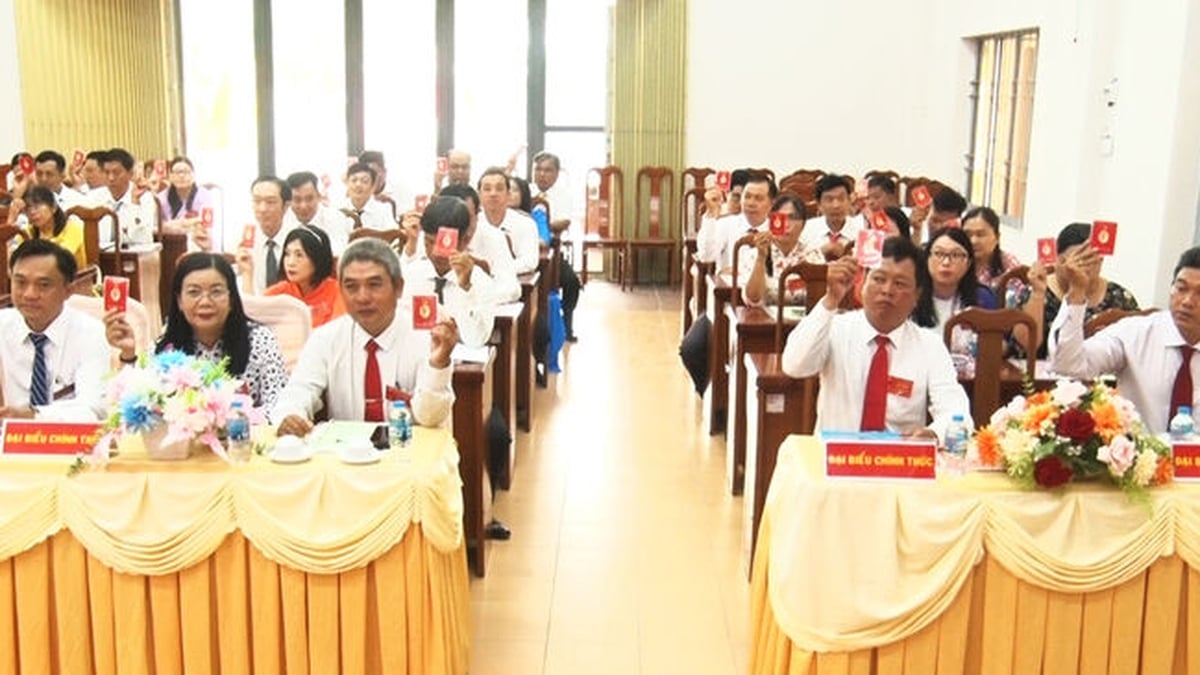

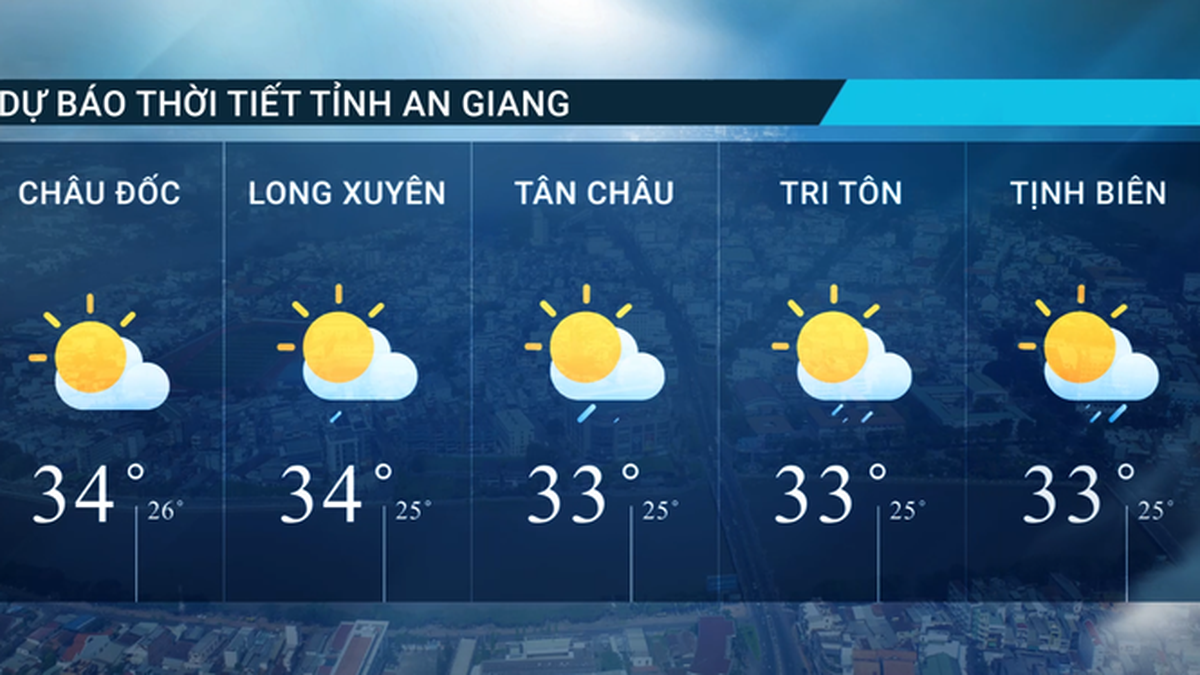





















































































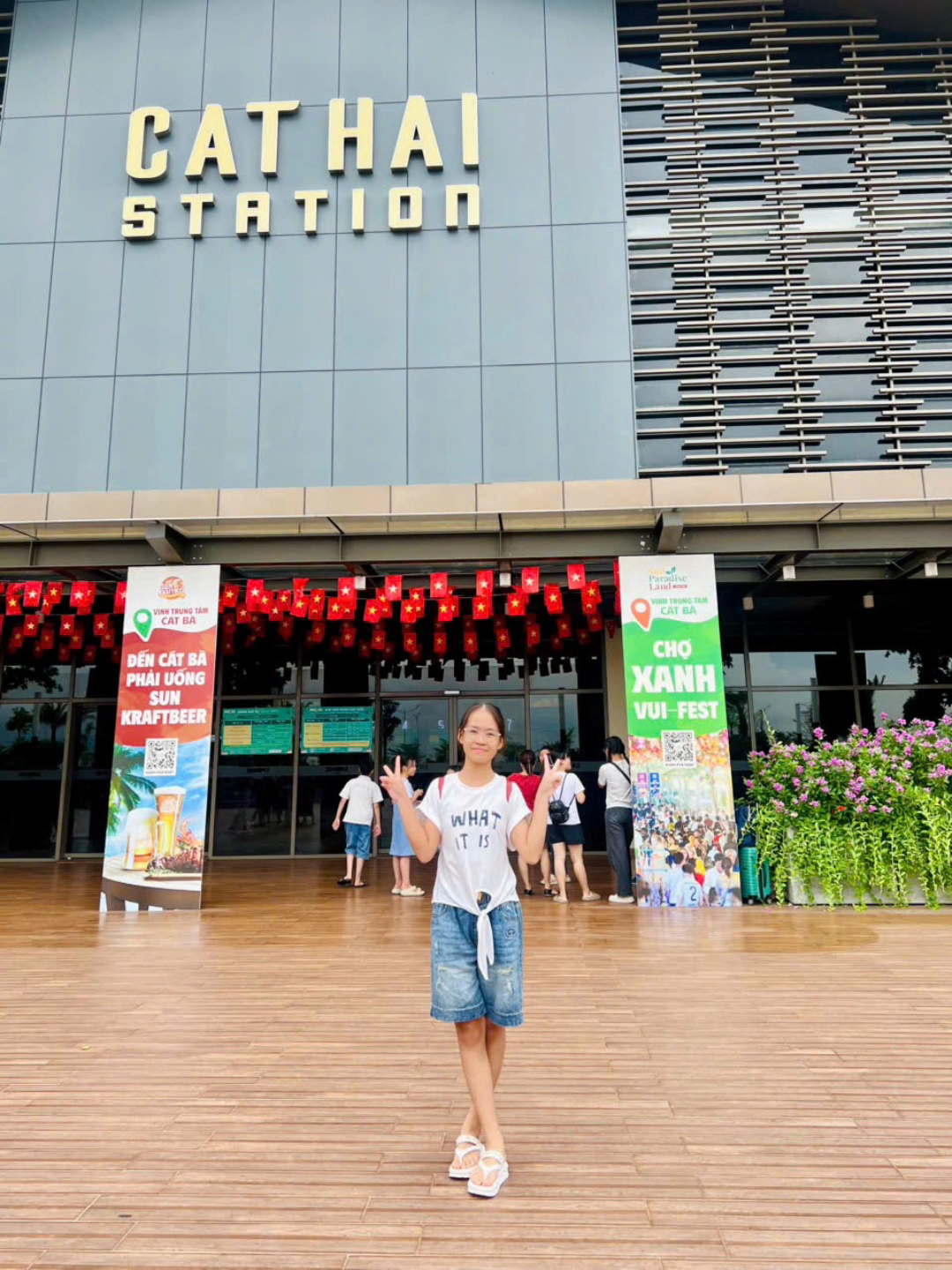

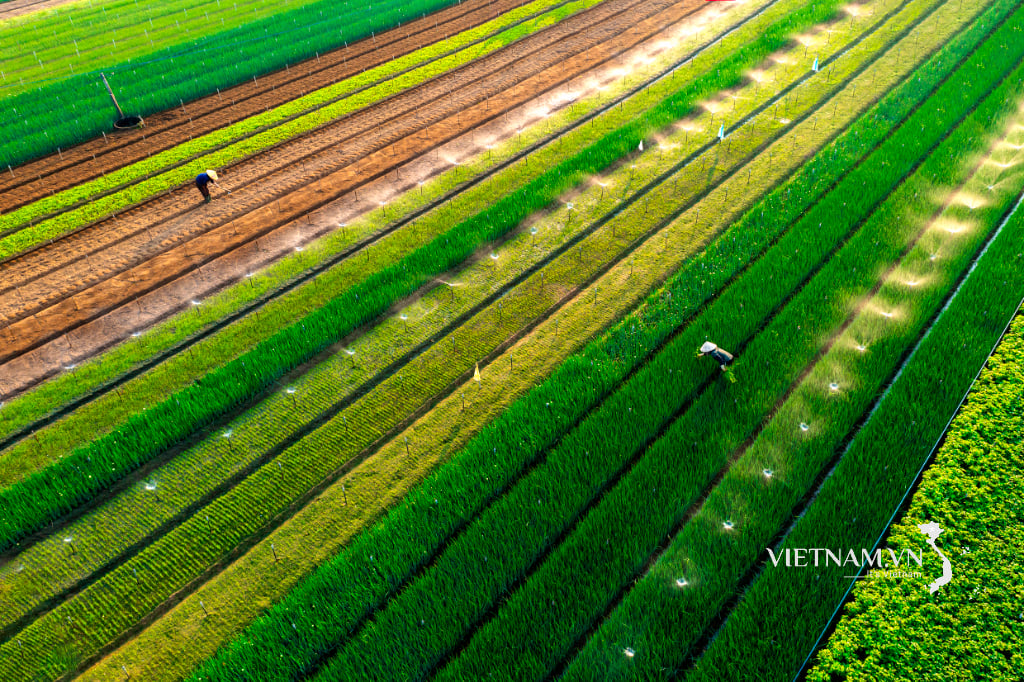
Comment (0)